Shohin bonsai are often displayed vertically to make use of limited exhibit space and to bring small trees closer to eye level. This can lead to interesting arrangements of trees that are often far more complex than the arrangement of larger bonsai on display.
The shohin displays below were featured at the recent Bay Area Suiseki and Shohin Show. I’ve listed the species I could identify – feel free to let me know in the comments if you can identify others (the trees are listed from top to bottom followed by single trees off to one side). I’ve also noted at least one thing I like about each arrangement.
For the display below, one that follows the convention of placing a black pine on top of the display table, I like that each tree sits on its own level. In other words, the tops of the trees don’t line up.
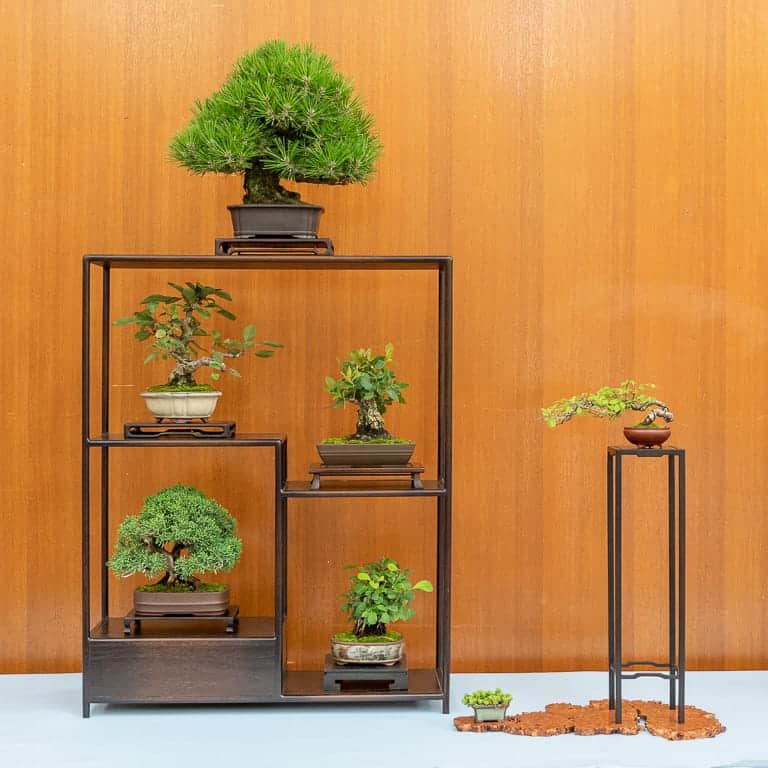
Black pine, crabapple and cork oak, procumbens juniper and quince, deciduous bonsai
The small bonsai below join two suiseki in a flower-shaped stand. By leaving the center space open, the exhibitor helps us focus on the six display elements without overcrowding the stand.

Small bonsai, azalea and maple, geranium, oak
In one of my favorite displays, Eric Schrader used glass and horizontal pieces of wood to make the bonsai appear to float in space. The frosted glass provides frames for the ficus and small juniper while creating depth as some sheets were arranged in front of others. I also appreciate how this arrangement avoided the shadows that darken trees on the lower shelves of box stands.

Live oak, crabapple and shimpaku, ficus, shimpaku
Robert Potts of Rough Cut Pottery did a great job below using trees with very little visual weight to avoid crowding a display with thirteen elements.
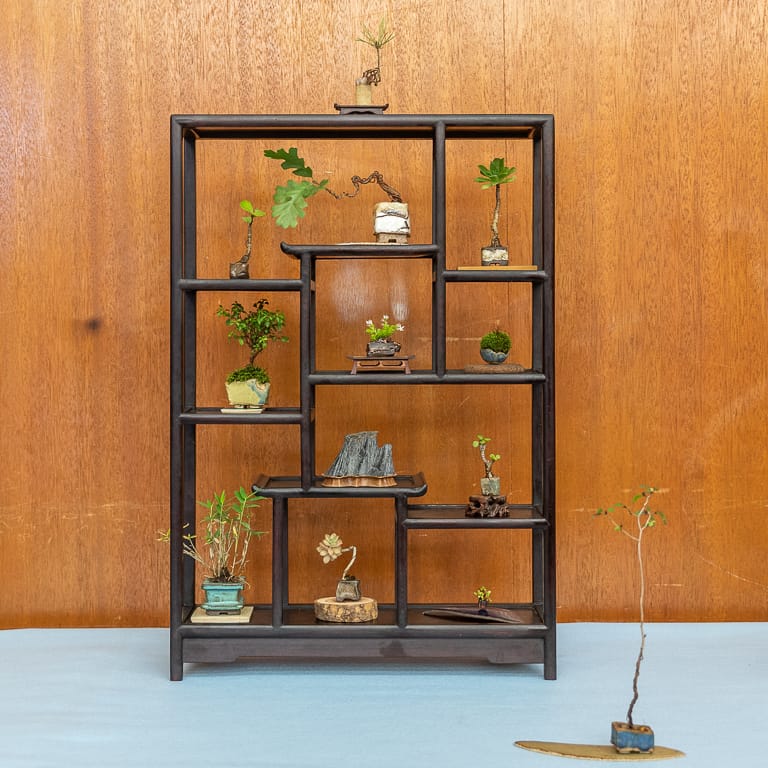
Mini bonsai display
The six trees below are a great example of how using pots with different shapes, styles, and colors can add contrast to a display.
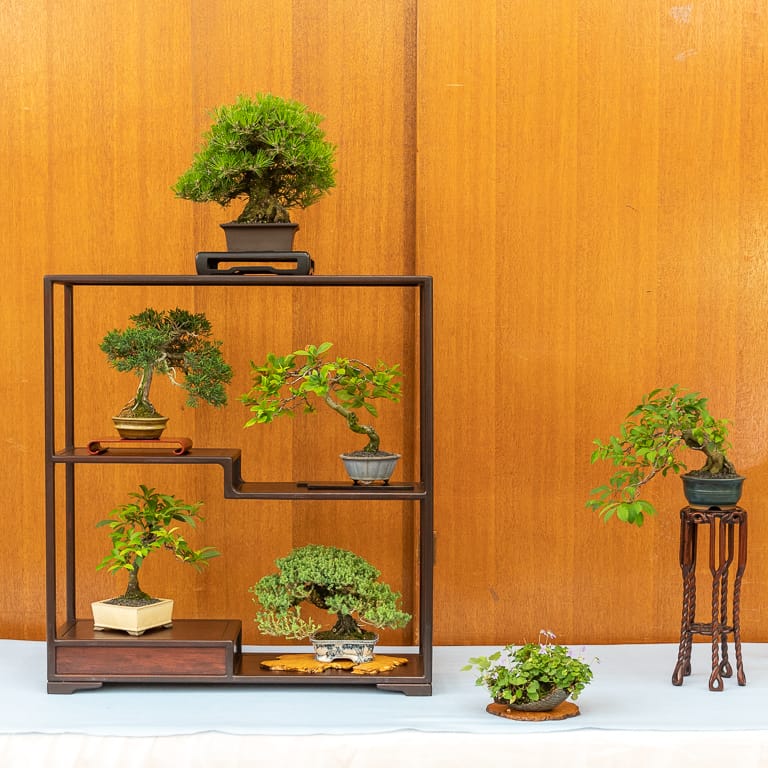
Black pine, shimpaku and princess persimmon, crabapple and procumbens juniper, princess persimmon
The display below is notable in that every tree is on its own stand. Using small stands can help vary the heights of each tree while providing additional contrast among display elements.
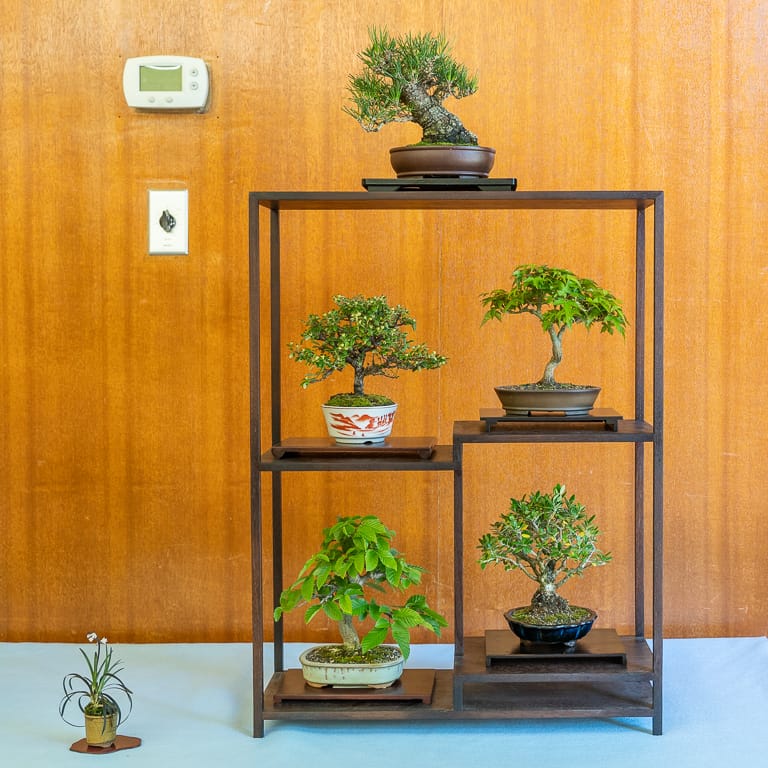
Black pine, cotoneaster and maple, hornbeam and olive
Finding six trees that work well together with unique foliage can be difficult. This display is visually interesting in that we have smaller leaves, larger leaves, narrower leaves, and broader leaves. And the two trees with similar leaves – the pines – are very different colors offering another kind of contrast.

Black pine, zelkova and ginkgo, elm and birch, white pine
The direction each tree points can have a big effect on any arrangement of shohin. The display below does a good job of placing trees with strong flow where they lead the eye toward other trees in the display.

Black pine and kingsville boxwood, olive and elm, hornbeam
The trees inside the box stand below have roughly similar visual weight. This is a subtle point that can make a big difference in terms of which trees get our attention.
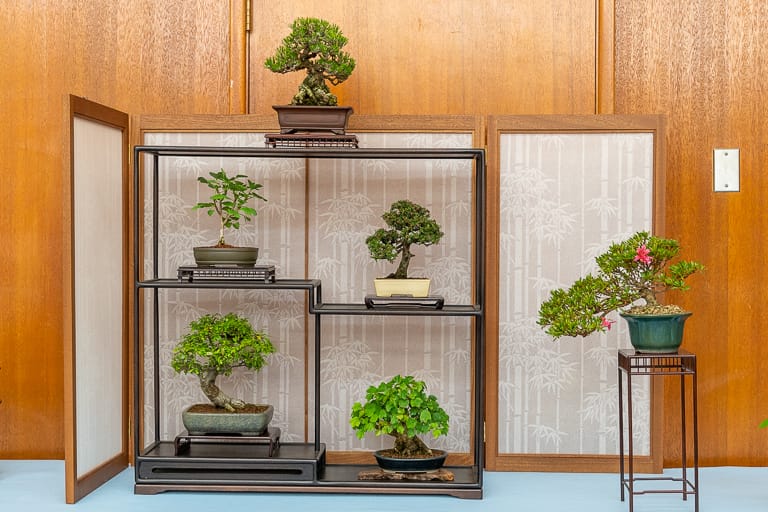
Black pine, gingko and cotoneaster, small bonsai and trident maple, azalea
If you’re interested in reading more about shohin display, see “Anatomy of a shohin display” featuring photos of trees from this year’s Gafu-ten exhibit in Kyoto, Japan.
Subscribe to Bonsai Tonight
New Posts Delivered Every Tuesday and Friday
Thomas Morphis says
Thanks for posting these photos and comments, Jonas. I planned to see this exhibit, but had to leave town on family matters. Grateful to see these displays through your eyes.
Jonas Dupuich says
Thanks Thomas – am glad you enjoyed the pics!
Mike Horine says
Jonas, Great article and great explanations and tips. Keep up the great work!
Jonas Dupuich says
Thanks Mike!
Tish Cassaday says
Great article!! I am wondering what kind of bamboo (?) is in the left corner of the mini bonsai display.
Thanks!
Jonas Dupuich says
Thanks Tish! I’m not sure about the bamboo – you might check with Robert at: https://www.facebook.com/RoughCutPottery/
Sarah says
In the first pic, I believe the lone tree on top of the tall stand was a little elm.